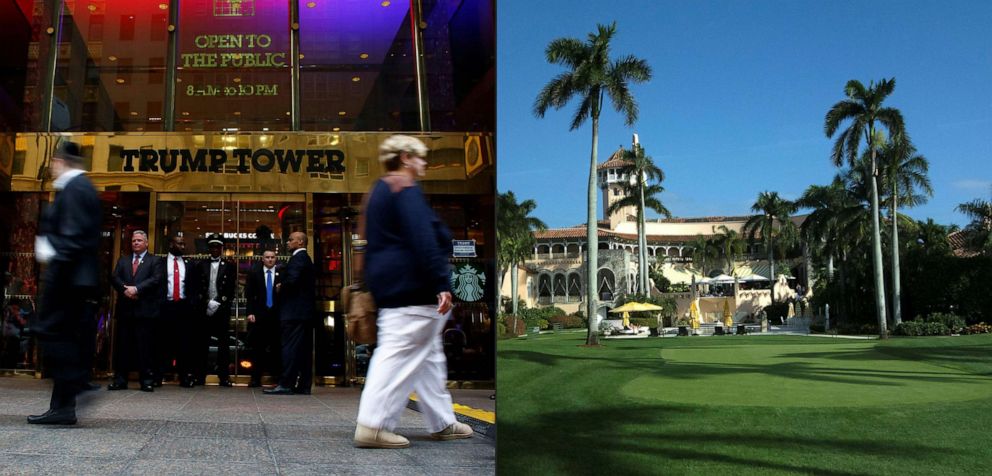President Trump moved from New York to Florida, here's how presidential home security works: Analysis
How can a president change their residence considering the security impact?
President Trump recently announced that he was changing his residency from New York to Florida. "They haven't treated me properly, I pay millions of taxes. Millions and millions of dollars in New York and they've never treated me, you know, since I became president, they just haven't treated, I think the office with the kind of respect," was his claim for moving.
That announcement raised lots of questions including how can a president change their residence considering the security impact. Since the end of 2016, Trump has maintained Trump Tower as his primary residence, requiring a visible security envelope instituted by the U.S. Secret Service.
In 1790, the Residency Act, the compromise deal struck between Alexander Hamilton, Thomas Jefferson and James Monroe -- and made famous in the play “Hamilton” -- designated Washington D.C., as the seat of the U.S. government and the official home of the president.
While this deal secured where the president formally lived while in office, it didn’t stop presidents from also maintaining and designating private property as “other” residences. For George Washington, it was Mount Vernon and Alexandria, Virginia. Franklin Delano Roosevelt had Hyde Park, New York, and Warm Springs, Georgia. President George W. Bush's residence was Crawford, Texas, and President Obama's was Chicago, Martha’s Vineyard and Hawaii.
There is a difference though between where the president claims where their home is and where they claim legal residency. Like most employees (the president being an employee of the American people), once hired, the president has to fill our paperwork related to taxes, benefits and residency. Like all Americans, the president’s residency must ultimately conform to a state's residency requirements.
Once a president claims residency and designates a primary residence, protecting that home is generally covered under provisions within the Former Presidents Protection Act and under the powers, authorities and duties of Secret Service.
Because Trump claimed Trump Tower as his primary residence, the building was under a full-time protective umbrella in the same way the Secret Service had implemented protective measures around former President Clinton’s home in Chappaqua, New York.
While in office, Clinton had also changed his place of domicile from Arkansas to New York after buying the Chappaqua home. Obama changed his domicile from Chicago to Washington D.C/, upon leaving office. In all cases, the Secret Service is mandated to implement security around whichever home the president chooses to live.

Although Trump Tower was designated as Trump's primary residence, he also frequents his homes in Bedminster and Mar-a-Largo. Each time he does so, the Secret Service is mandated to implement temporary security measures for the duration of his visit to those additional homes. However, there are nuances to a primary residence designation. Out of the three homes, only Trump Tower maintains a full-time Secret Service presence. The other two homes implement security measures just prior to President Trump’s arrival.
Any visitor to Trump Tower is put through a similar screening process anyone would expect when visiting someplace the president calls home. In contrast, if you were to visit Bedmister or Mar-a-Lago, and the president was not there, there would be no Secret Service security umbrella.
The protection of any president’s home starts with a “protective advance” by the Secret Service. This “advance” follows a protective methodology and is coordinated with counterparts who are subject matter experts in the several disciplines that the Secret Service will need to identify, review and secure. This intense planning process occurs at every protective venue the Secret Service is tasked to protect.
The assigned agents and the subject matter experts within those specific disciplines build, often from scratch, a security plan that encompasses every facet of the location. This includes coordinating with local law enforcement, venue management, catering staff, elevator technicians and of course, White House staff.
Additionally, Secret Service experts look at protective intelligence, chemical and biological threats, mechanical attributes of a venue, cyberthreats and ballistic capabilities -- and how to minimize risk and employ countermeasures for maximum protective effect.
To assist with securing these residences, the Federal Emergency Management Agency manages a grant program called the Presidential Residence Protection Assistance Act (PRPA) For Fiscal Year 2019 the PRPA grant provides $41 million to reimburse state and local law enforcement agencies for operational overtime costs associated with protecting the president’s non-governmental residences. Currently, New York, New Jersey and Florida are the only states with qualifying residences and there appears to be no movement to amend that law.
Donald J. Mihalek is an ABC News contributor, retired senior Secret Service agent and regional field training instructor who also serves as the executive vice president of the Federal Law Enforcement Officers Association Foundation.




